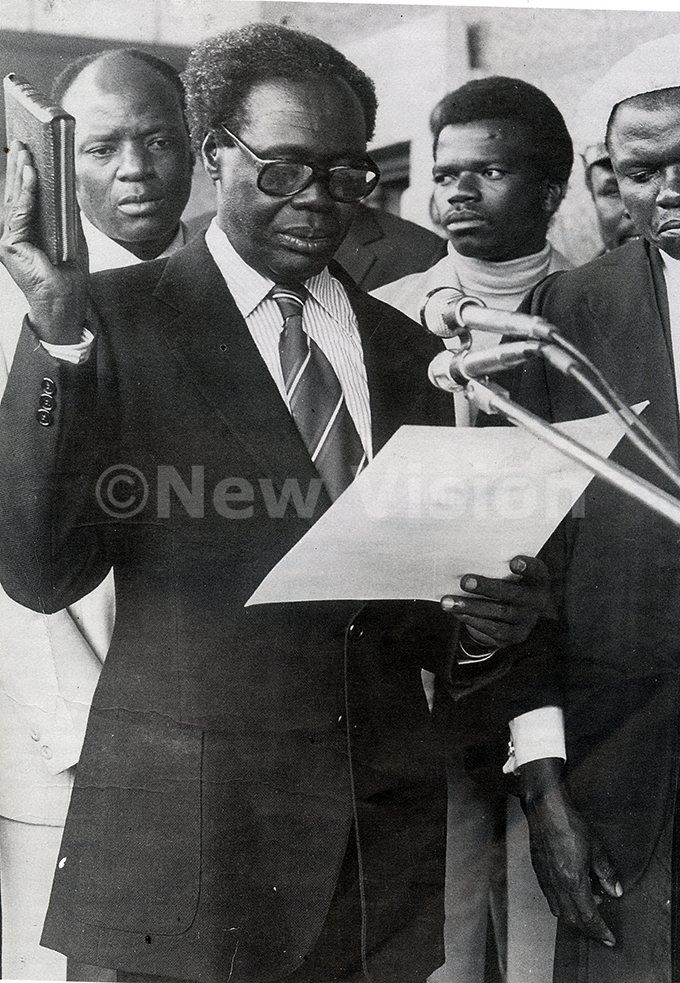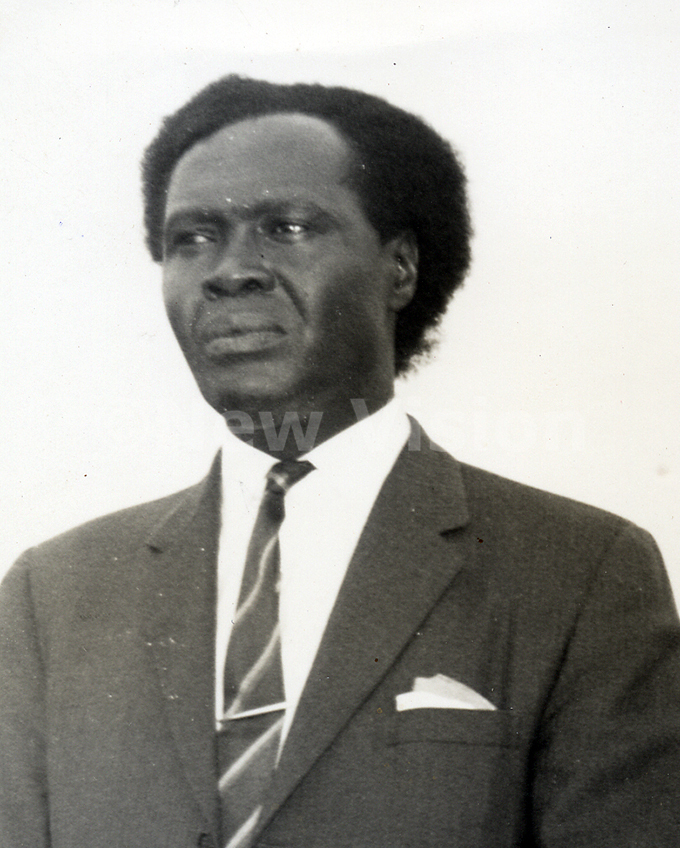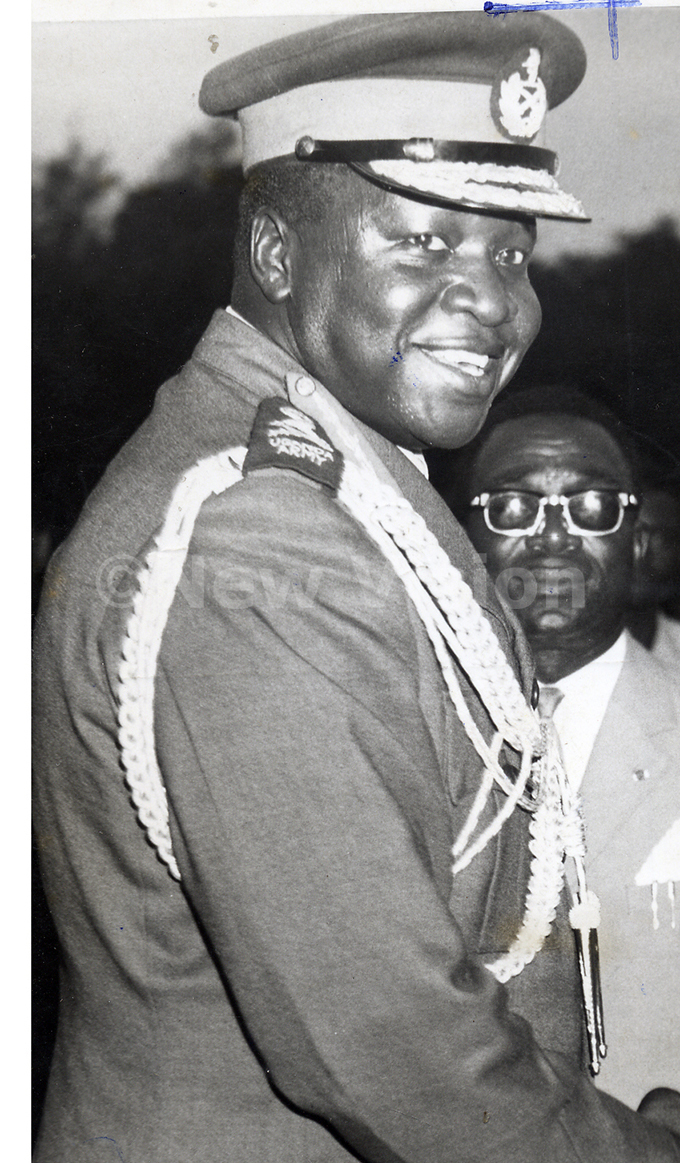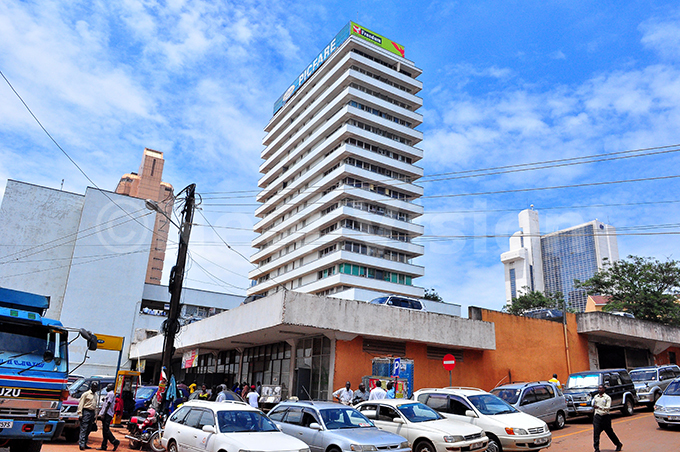How Idi Amin built UPC headquarters
At the time Amin toppled Obote, Uganda House was estimated to cost sh24m, a fortune then. President Amin pledged to complete it and, thereafter, turn it into government property.
In 1970, President Milton Obote, in his additional capacity as the leader of the Uganda Peoples Congress (UPC), announced October 16 to November 14, 1970, as the period within which his party would conduct branch elections.
Accordingly, on November 14, businessman James Mulwana, who was a UPC member, contested for the chairmanship of Kampala West, UPC branch, against Ahmad Lukwago. Indeed, Mulwana, who was mentored in politics and business by former minister William Kalema, decisively defeated Lukwago with 233 votes against 71.
At the end of the polls, UPC embarked on preparing for the then proposed national elections, dubbed 3+1. However, the elections did not come to pass, given that Maj. Gen. Idi Amin toppled Obote's government on January 25, 1971.
 President Milton Obote
President Milton Obote
Also, at the time of Amin's coup, the UPC leadership was in the early stages of constructing their party headquarters (Uganda House) on Kampala Road. The project had commenced in 1968 with a fundraising drive mobilised by Obote's Ugandan friends of Asian origin, Shafiq Arain, Gordial Singh and lawyer Anil Clarke (later killed on Amin's orders).
On the other hand, some of the local UPC supporters who contributed enthusiastically included Haji Musa Kasule of Wandegeya. His contribution of sh5001 was hailed by Obote in 1969 as the highest personal contribution which the UPC leadership had received towards Uganda House construction. It should be noted that Obote had entrusted the Milton Obote Foundation with the supervision of the Uganda House construction project.

In fact, it was the Milton Obote Foundation which contracted Multi Construction Ltd Company to construct the building. At the commencement of Uganda House construction, Cuthbert Obwangor was the chairperson of the construction committee.
He also served in different cabinet portfolios during Obote's first reign (1962-1971), such as minister of cabinet affairs and regional administration, after which he was detained at Luzira Maximum Prison on suspicion by Obote that he was part of the clique that plotted to assassinate him (Obote) on December 19, 1969 at Lugogo indoor stadium during UPC's national conference.
 President Idi Amin & King Sihanuk of Kampuchia and family in 1976
President Idi Amin & King Sihanuk of Kampuchia and family in 1976
AMIN'S INPUT
At the time Amin toppled Obote, Uganda House was estimated to cost sh24m, a fortune then. President Amin pledged to complete it and, thereafter, turn it into government property. For that reason, he set up the National Trust, chaired by N.L.M Sempira, to oversee its completion. The trust replaced the Milton Obote Foundation, which had been in charge of its construction since 1968.
The National Trust started its work by contracting Dilbagh Singh Brothers Company Ltd to take on the construction works, which the original contractor, Multi-Construction Ltd had started. The reviewed budget for the completion of Uganda House was estimated to cost sh30m using taxpayer's money.

It was also hoped that Uganda House would be completed in May 1973. After the aforesaid new contract was signed, R.W. Oliver, the project manager of Dilbagh Singh Brothers Ltd, promised to resume the construction works soon. However, there was a delay considering they started work later on, on May 4, 1972.
As construction works took course, Amin instructed John Ssebaana Kizito, the then general manager of National Insurance Corporation (NIC), to avail sh4m in form of a grant towards the project. Indeed, on August 16, 1973, Ssebaana handed over a cheque worth that amount to Sempira.
The handover ceremony took place at NIC headquarters in Kampala. During the aforesaid ceremony, Ssebaana pledged that NIC would always extend financial assistance to any project aimed at developing Uganda. He descrbed Uganda House as a reasonable venture, which could not be left half-finished.

He added: "It is the wish of the corporation that we help the government in every spirit…We, therefore, thought that it is worthwhile giving the Uganda House construction project money." In response, Sempira said it would be a pity to see Uganda House, which had been under construction for the past five years, left uncompleted.
He, therefore, thanked NIC for the sh4m grant, which he (Sempira) described as a sign of development in the construction work. Acting on Amin's directives, more funds were channeled from government coffers towards the construction of Uganda House until he was toppled in April 1979.

AMIN INSPECTS
On September 8, 1978, Amin's principal private secretary, Jonathan Ekoch, scheduled Amin's tour of Uganda House and the showroom of the ministry of information, broadcasting, and tourism at the same building.
On arrival at Uganda House, Amin was received by the minister of Justice, Matovu, who was doubling as the chairperson of the Board of Trustees of Uganda House. Amin was also received by Sempira and Dr. Lubega (the chief government architect), the architects from Peat field and Bodgender Company, Maj. Gen. Yusuf Gowon (army chief of staff), Maj. Gen. Emilio Mondo (secretary of defense) and Brig. Taban (commandant of the marines).

In his speech after the tour, Amin said Uganda House was originally constructed by the UPC government to house the headquarters of their party, but with his declaration of the ‘economic war' in 1972, he decided that his government had to take over the building so that it served the interests of the people other than those of UPC.
Amin pledged that most of the office space in the building would be occupied, not by the staff of his office (president office), but by the ministries of finance, planning, and economic development; ministry of information, broadcasting and tourism, as well as the ministry of provincial administration, among other government departments.
Amin also promised that the 20 residential flats with three bedrooms each in that building would be occupied by senior civil servants and that the showroom space in Uganda House would be rented out to private companies to set up their shops for business.
Amin further pledged that his government would embark on the second phase of constructing the other wing of Uganda House at a cost of sh70m. He hoped to finish the second tower in 1980. However, Amin's wish did not come to pass as he was toppled on April 11, 1979. The second tower has never been constructed to this day.

UPC RECLAIMS BUILDING
When Prof. Yusuf Lule succeeded Amin, some traders rented space on Uganda House. Later, when Godfrey Binaisa succeeded Lule, some senior UPC functionaries mobilised some soldiers of the Uganda National Liberation Army (UNLA), stormed Uganda House and reclaimed its ownership.
Indeed, some UPC officials like David Anyoti and Osindek Wangor started carrying on UPC party work in that building. When Obote returned to power on December 15, 1980, the UPC leadership, through the Milton Obote Foundation, contracted Ringwesi and Opoka Company Advocates to evict more than 20 companies that were operating from Uganda House. Most of those companies were owned by ministers and senior UPC supporters.

Their eviction was meant to enable the Milton Obote Foundation streamline the tenancy of the building. Also, when Obote returned to power in 1980, he rewarded his allies (Shafiq Arain and Gordial Singh) handsomely for mobilising the funds used in the initial construction of Uganda House in 1969.
In so doing, Obote appointed Singh as Uganda's High Commissioner to India. On the other hand, Obote appointed Shafiq to his cabinet-as the minister without portfolio in the office of the president. On January 14, 1981, Obote assigned Shafiq the additional responsibility of being Uganda's High Commissioner to the Court of St. James's in London, England.
It is pertinent to note that Shafiq was born in Tororo in 1935. He became Obote's friend in 1958 when they were both members of the Uganda National Congress (UNC), which later split into UPC. In the early 1960s, Shafiq served as the vice-chairman of the UPC Electoral Commission.

In 1966, Shafiq married Leana Godinho, a former judicial officer in the High Court of Uganda. By the way, Shafiq's wife was the first female Ugandan to become a magistrate. Her first duty station was at Mengo district court.
At the time of their marriage, Shafiq was serving as a member of the National Assembly of Uganda, which he joined as a member in 1962 till 1971 when Amin's coup occurred. Thereafter, Shafiq spent his exile stint in Britain, where he later built several houses during his days as Uganda's High Commissioner to the Court of St. James's